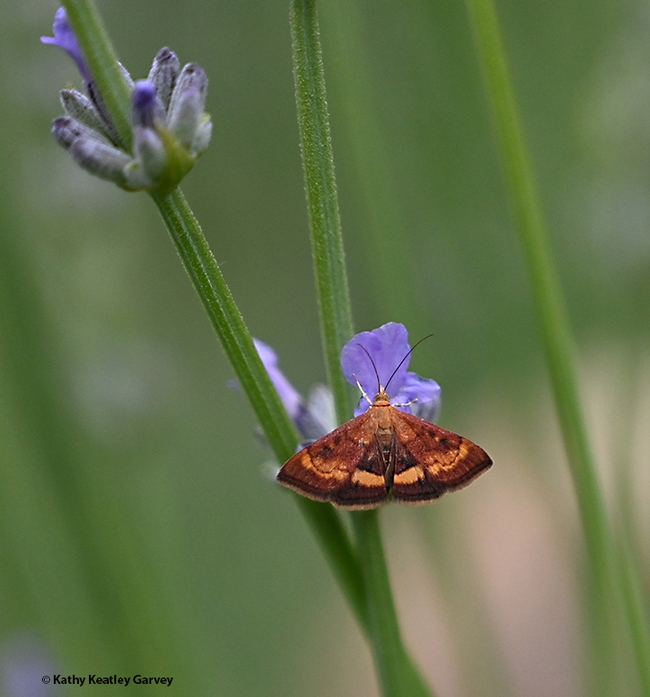What's better than a mint on your pillow?
A mint moth in your garden!
We ran across this colorful mint moth, Pyrausta californicalis (as identified by UC Davis distinguished professor Art Shapiro) on May 20 in a Vacaville bed of tall lavender.
"Although native, it occurs almost exclusively in gardens, where it breeds on any species of Mentha (mint)," Shapiro says. "It has multiple broods, most of the year. When we grew mint we had it up the yazoo in our garden. Pretty little thing!"
Pretty? Yes, it is.
It's in the family Crambidae. We've never seen it feeding on Mentha species. We've seen it only on lavender, sharing nectar with buzzing honey bees.
The Bohart Museum of Entomology at UC Davis hosts an annual Moth Night (but hasn't during the pandemic due to restrictions).
National Moth Night will be observed July 17-25 this year. That's when entomologists and insect enthusiasts celebrate the beauty, life cycles and habitats of moths.
On the National Moth Night website, you'll learn
- Moths are among the most diverse and successful organisms on earth.
- Scientists estimate there are 150,000 to more than 500,000 moth species.
- Their colors and patterns are either dazzling or so cryptic that they define camouflage. Shapes and sizes span the gamut from as small as a pinhead to as large as an adult's hand.
- Most moths are nocturnal, and need to be sought at night to be seen – others fly like butterflies during the day.
- Finding moths can be as simple as leaving a porch light on and checking it after dark. Serious moth aficionados use special lights and baits to attract them.
Make mine mint...
Attached Images:
